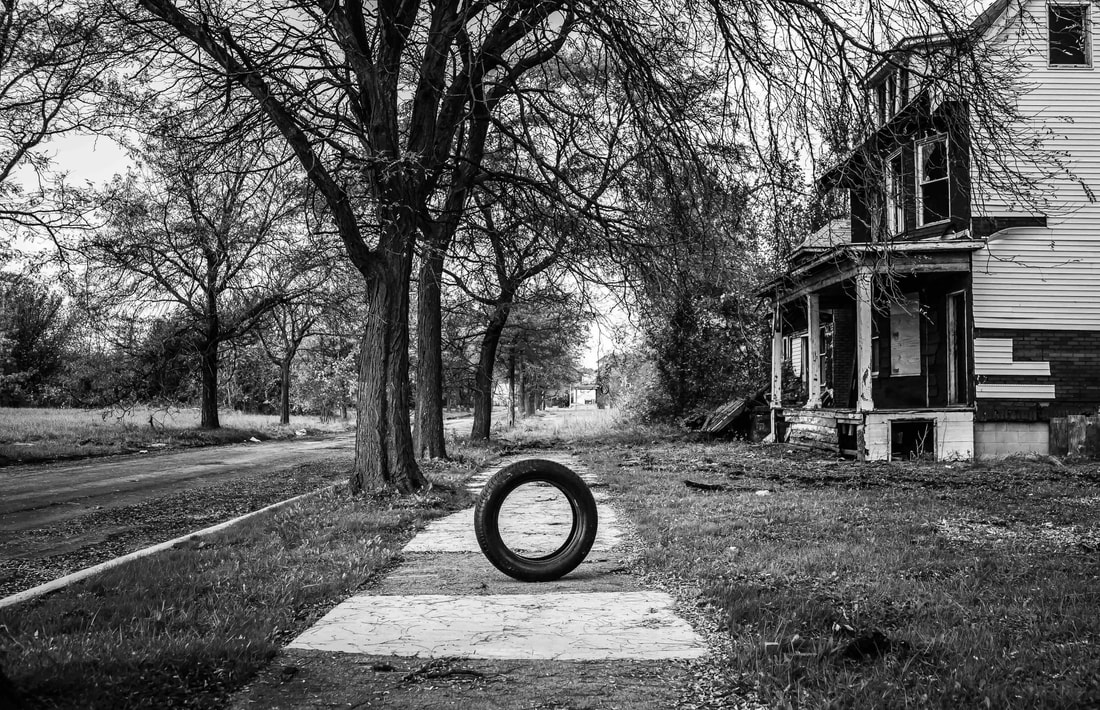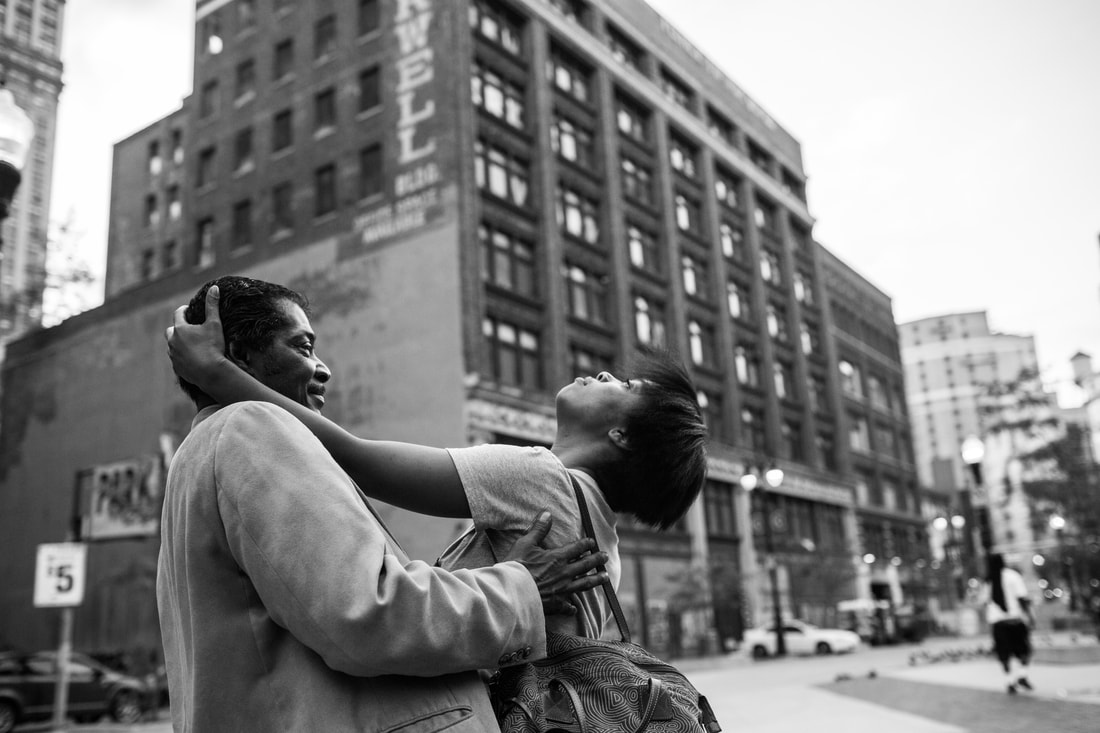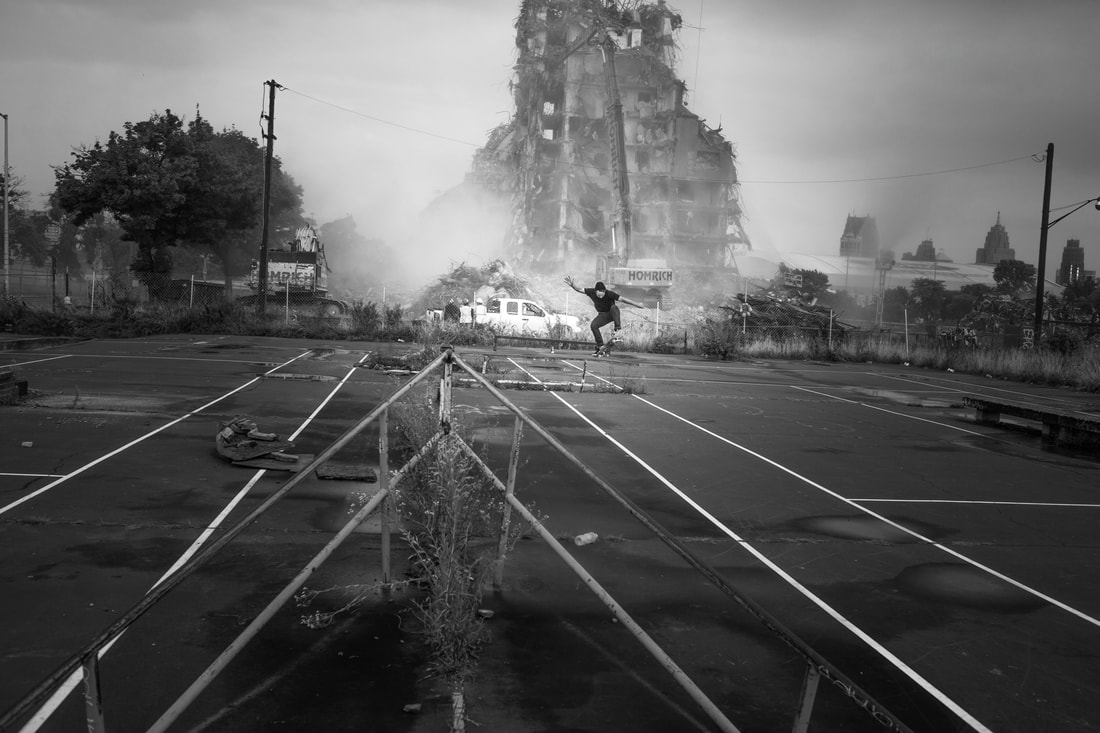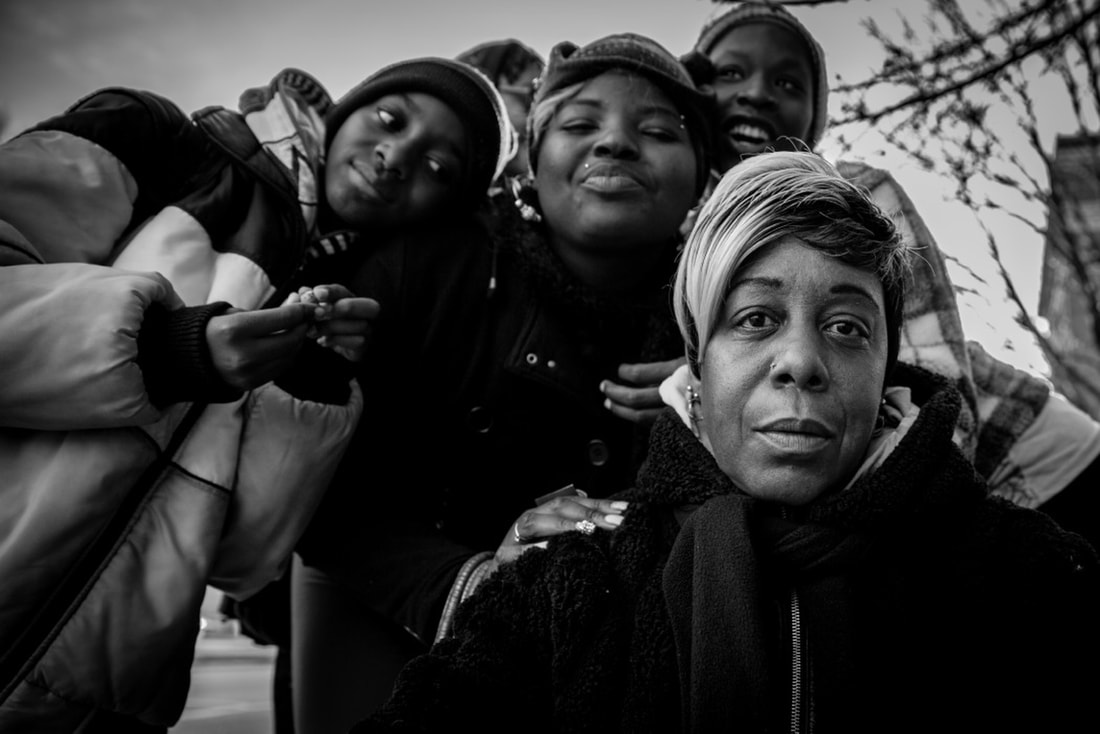Lost & Found in Detroit (2012 & 2023)
Detroit is arguably one of the most complex cities in the United States. In its heyday, it was home to nearly 2 million people, a thriving auto industry, and a rich music culture. In the 1960s, the city began a steep decline, fueled by racial divides and poor leadership,. By 2013, Detroit declared bankruptcy and struggled to provide services to its dwindling population, barely at 650,000.
From 2012-2015, at the height of Detroit's bankruptcy, Amy documented Detroit from the street level for 500 days. She was a new resident who wanted to explore her familial roots in the city. The resulting project captured a lyrical humanity and an exploration of Amy's personal connection to her hometown. The essay was widely published (The Guardian, Fisheye, LensCulture, PBS, to name a few).
Now, 10 years later, Amy is embarking on a second 500-day "Lost & Found in Detroit" photo essay that explores how the city has changed, the ways in which it has remained the same, and Amy's own complex and evolving relationship to the place she calls home.
From 2012-2015, at the height of Detroit's bankruptcy, Amy documented Detroit from the street level for 500 days. She was a new resident who wanted to explore her familial roots in the city. The resulting project captured a lyrical humanity and an exploration of Amy's personal connection to her hometown. The essay was widely published (The Guardian, Fisheye, LensCulture, PBS, to name a few).
Now, 10 years later, Amy is embarking on a second 500-day "Lost & Found in Detroit" photo essay that explores how the city has changed, the ways in which it has remained the same, and Amy's own complex and evolving relationship to the place she calls home.
My mother grew up here with her seven siblings. Just over a mile from my current house. She didn't live in one of the three houses in the picture, she lived in what is now an empty space in front of them, the somewhere in-between.
My phone has a memory of this, as if her home were still there, but there is nothing but land. |
If I listen closely, I can hear the map unfolding,
city bulldozers over the ruin, history flattened into oblivion.
This time, it isn't the home my mom grew up in.
Gone before I was old enough to remember it.
city bulldozers over the ruin, history flattened into oblivion.
This time, it isn't the home my mom grew up in.
Gone before I was old enough to remember it.
Sometimes I feel like these streets have a memory of me.
They could recite the whole plot.
Maybe some places are meant to belong to you.
Waiting for you to arrive.
They could recite the whole plot.
Maybe some places are meant to belong to you.
Waiting for you to arrive.
"It wasn't my decision to leave," a neighbor said to me, packing up her home.
"I was born and raised in Detroit. I don't want to leave the city."
She tells me her rent is out of reach.
She has found an apartment on the other side of town.
"I want something that will feel like home."
"What does home mean to you?" I ask her.
"This."
"I was born and raised in Detroit. I don't want to leave the city."
She tells me her rent is out of reach.
She has found an apartment on the other side of town.
"I want something that will feel like home."
"What does home mean to you?" I ask her.
"This."
Some people ask if I photograph urban decay.
It always catches me off guard.
Maybe it's the word choice.
What I see is history, memory, land
as personal as skin.
It always catches me off guard.
Maybe it's the word choice.
What I see is history, memory, land
as personal as skin.
I bought a 1926 historic home in Detroit.
Only four people have owned it over 90 years.
Many of my neighbors have lived on my block for more than 30 years.
When I bought my home, my boyfriend and I had talks of starting a family.
I'm 41 now.
Things change.
Only four people have owned it over 90 years.
Many of my neighbors have lived on my block for more than 30 years.
When I bought my home, my boyfriend and I had talks of starting a family.
I'm 41 now.
Things change.
I met a man who told me he never forgot when a group of tourists described his city as a ghost town.
Now you can see hundreds of people walking around downtown.
New ghosts.
People are clamoring over each other at the door to get in. Some have been waiting for hours. Once inside a man walks past me cradling a plant housed in a porcelain turtle holder. There is a fake strawberry pie in the kitchen with a $3 price tag. I see shoes on the shoe rack, a half a roll of toilet paper on the holder in the bathroom, a safari hat on a chest in the front hallway. How long has it been there? It doesn't seem like anyone is thinking about anything but the objects they are combing through, but all I can think about are all of the secrets that will go with them. So this is what happens. Things disperse in hundreds of different directions and live on with strangers who have no idea of the how or why or why it even matters. I was told the couple lived here in their historic Detroit home since 1975. The year I was born their lives in this house were just beginning. And when I walk out the door with my Art Deco sewing table, I notice there are spools and fabric still in the drawers.





































